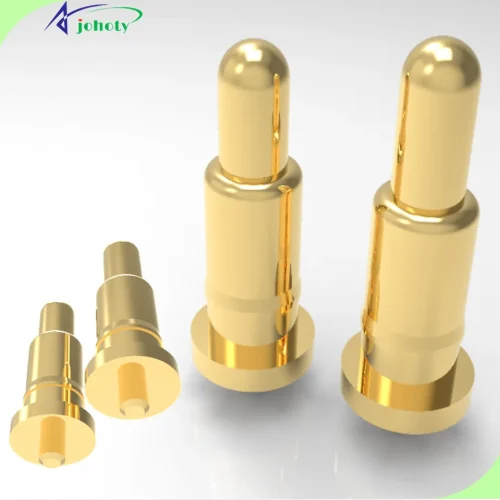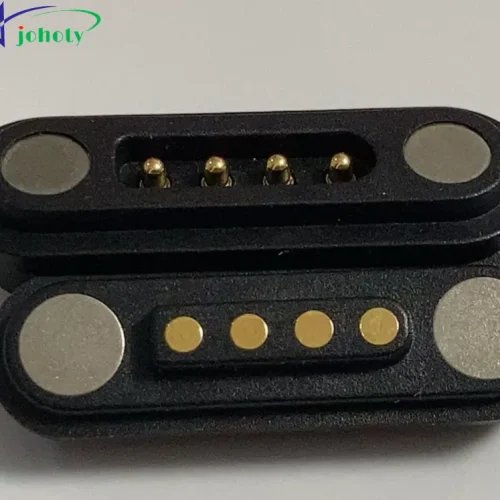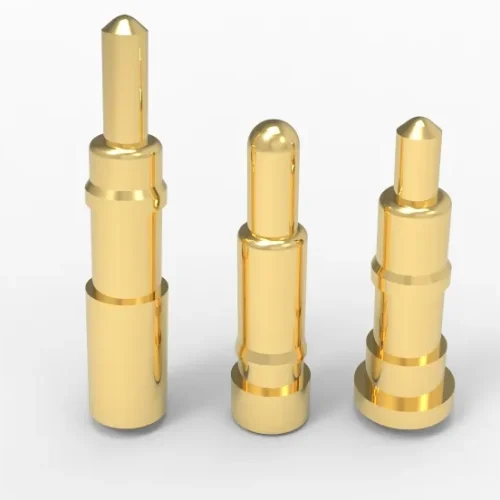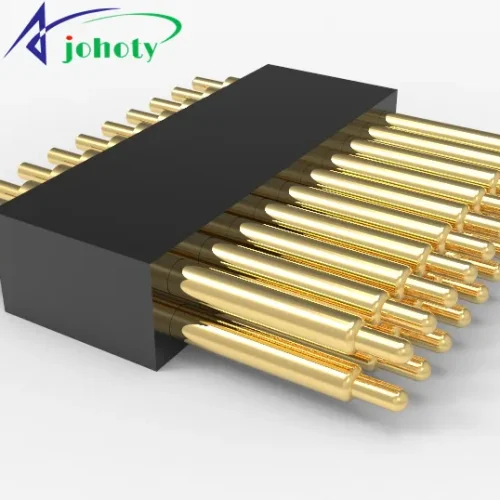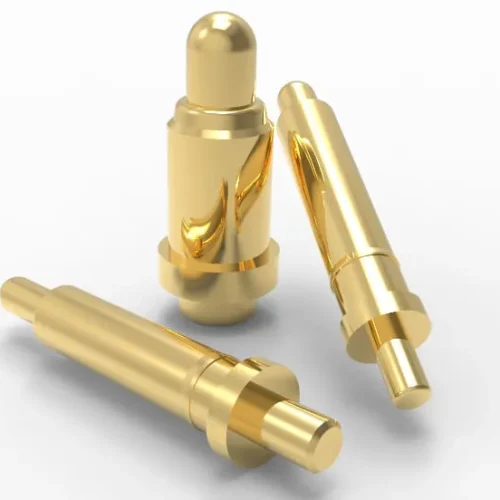Explore the Pro Guide! Learn How to Measure Gas Struts! Show Engineers and Buyers Detailed Steps, Tips, and Solutions for High Efficiency!
How to Measure Gas Struts? Gas struts, as a key mechanical component, play a vital role in automotive manufacturing to automated equipment. The efficacy of these devices has an immediate bearing on the final product’s quality and safety. Accurate measurement is a crucial part of ensuring their performance. However, measuring gas struts correctly does not come without skill. Especially when dealing with so many different types and sizes of gas struts.
Gas struts are also gas springs
The purpose of this article is to provide engineers, technologists, and purchasing bosses with comprehensive guidelines. It is to show how to accurately measure key parameters of gas struts. This includes force, stroke length, and dimensions. Whether you are evaluating your gas strut needs in an existing project or exploring the possibilities of a new one. This article will show you the necessary preparations, detailed measurement steps, and practical tips. It is to ensure that you can select or design the gas spring solution that best suits your needs.
Gaining a profound insight into these measurement techniques will enhance the productivity and excellence of your projects. And, you can also save valuable resources and many time by bypassing common mistakes and pitfalls.
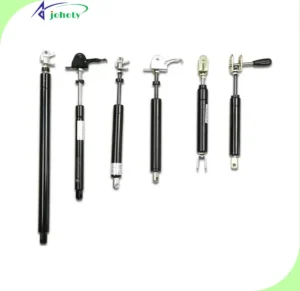
What are gas struts?
Gas struts or gas springs, utilize compressed air to perform the work of the device. Due to their unique performance advantages, they are widely used in modern industrial design and mechanical engineering. Compared to traditional springs, gas struts provide a smoother and more controlled force output. Making them ideal for controlling the smooth opening and closing of objects. Such as flaps, doors, and windows.
Working principle
The basic principle of gas struts is to utilize the pressure change of the gas inside to generate force. When the gas is compressed, the internal pressure increases, creating an outward thrust. When releasing the pressure, the gas struts return to their original state. This reversible mechanical characteristic makes gas struts excel in load regulation, vibration absorption, and positional positioning.
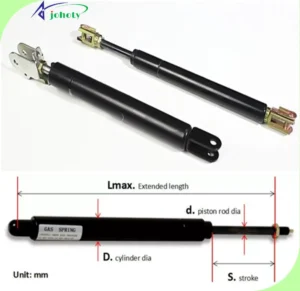
Key parameters
- Force (F): The force generated by a gas spring, usually measured in Newtons (N). It is key for measuring the performance of gas struts.
- Stroke (S): the maximum distance a gas spring can extend and contract, indicating its range of action.
- Dimensions (D): include the diameter and length of the gas spring. These dimensions are very essential to ensure the fit of the gas spring to the mechanical equipment.
Types
- Free-standing gas struts: allow free movement and are commonly used to easily lift or support heavy objects.
- Locking gas struts: can be locked in any position and are used in applications where a fixed position is required.
- Traction Gas Struts: The opposite of a traditional thrust gas spring, they shorten when force is applied.
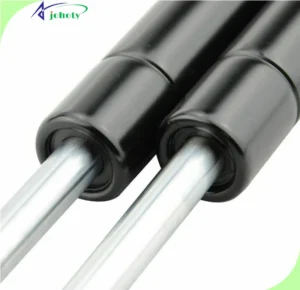
Preparation of measuring gas struts
Preparing how to measure gas struts well. It provides a solid foundation for accurate measurements. This helps to ensure a smooth measurement process and reliability. At the same time, this provides solid data for subsequent application and design decisions.
-
Understanding Measurement Objectives
- Identify the gas spring parameters that need to be measured, such as force (F), stroke (S), and dimensions (D).
- Understand how these parameters affect your specific application and design requirements.
-
Select the appropriate measurement tools and equipment
Make sure all tools are calibrated to ensure accurate measurement data.
- Force Measurement: Use a force gauge or specialized test stand to measure the force output of a gas strut.
- Stroke measurement: Use calipers or depth gauges for accurate measurements.
- Dimensional measurements: Use calipers or slide gauges to measure outside diameter and length.
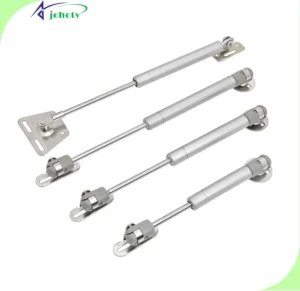
-
Preparing the Measurement Environment
- Choose a dry, dust-free, temperature-controlled environment for the measurement. It is to avoid any influence of environmental factors on the measurement results.
- Ensure that the handling space is enough, especially for larger gas struts.
-
Know the condition and history of the gas spring
- Inspect gas struts to determine if there is any visible breakage or abrasion that may affect the measurement results.
- If possible, get a history of the gas spring’s use. This includes previous applications and any maintenance records.
-
Safety measures
- Before taking measurements, you need to know all relevant safety measures. Especially when handling gas struts with high forces or large dimensions.
- Use suitable PPEs, for example, gloves and safety glasses.
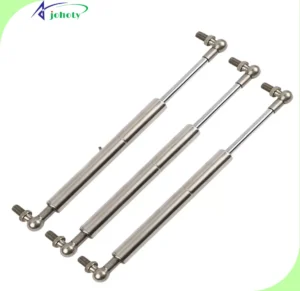
Measurement steps and techniques
-
Prepare to measure
- Ensure that all measuring tools and equipment are calibrated and ready to use.
- Set up a suitable working environment according to the previous preparations.
-
Measuring Force (F)
- Set the force gauge: If using an electronic force gauge, make sure it is in the correct measuring mode and zero it.
- Apply Load: Slowly apply a load to the gas spring until the desired stroke point is reached.
- Record reading: Record the reading on the force gauge when the specific stroke is reached.
Tips: To ensure the measurement is of utmost precision. It is recommended to repeat the measurement several times at different travel points and calculate the average value.
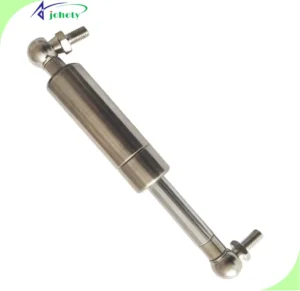
-
Measuring stroke (S)
- Marking the starting point with the gas struts in the fully un-extended state.
- Measurement of the extended length: Slowly extend the gas struts to their fully extended state and mark it again.
- Calculate the stroke: Measure the distance between these two marked points using calipers.
Tips: Make sure the gas spring stays straight during the measurement process. This avoids bending or twisting which may affect the measurement result.
-
Measuring diameters(D)
- Measuring Diameter: Measure the outside diameter of the gas spring using calipers. Including cylinder OD and rod OD.
- Measuring Length: Measure the total length of the gas spring in its fully contracted state.
Tips: When measuring the dimensions, make sure the calipers are parallel to the measuring surface. This is to maintain a high accuracy of each measurement.
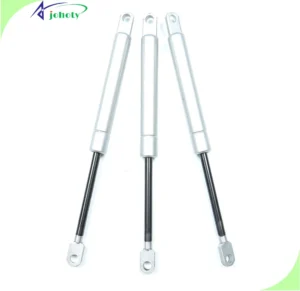
-
Recording and analyzing data
- All measurement results are recorded and analyzed as necessary. e.g. mean value calculation or comparison with design parameters.
-
Assessment and adjustment
- Evaluate whether the gas struts meet the design requirements based on the measurement results.
- If necessary, make adjustments or select a gas strut of a different size.
Tips: During the evaluation process, consider the actual applications and working conditions of the gas struts. This is to ensure that the selected gas struts will meet the actual requirements.
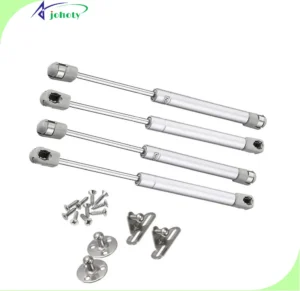
Questions and solutions when measuring gas struts
These solutions enable customers to more effectively address challenges encountered during the measurement process. They can ensure the accuracy and reliability of measurement results. Helps customers optimize their manufacturing processes and product designs. They also improve the performance and satisfaction of the final product.
-
Unstable readings when measuring force
Ensure that the force gauge being used is properly calibrated. Make sure that the load is applied steadily during the measurement. Avoid rapidly changing loads as this can lead to fluctuating readings. In addition, check if there are disturbing factors in the working environment. Such as vibration or temperature fluctuations, which can affect measurement accuracy.
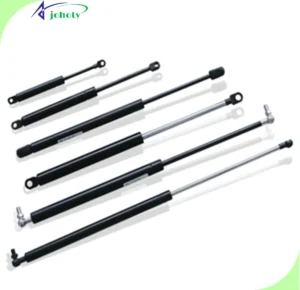
-
Inconsistent stroke
When measuring the stroke, make sure that the gas struts remain straight from fully contracted to fully extended. Use a high-quality measuring tool and repeat the measurement several times under the same conditions to calculate the average value. Inconsistencies may be caused by inaccuracies in the measurement method or variations in the gas spring itself.
-
Unsure how to choose the right measuring tool
The selection of a suitable measuring tool depends on the specific requirements. For force, electronic force gauges are recommended as they provide accurate and easy-to-read results. For stroke and dimensions, use highly accurate calipers or digital slide rules. Make sure all tools are suitable for the size range and accuracy requirements you need to measure.
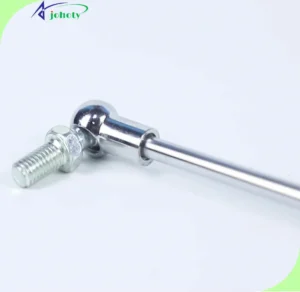
-
How to secure the measurement process
When handling high-force or large-size gas springs, you need to wear appropriate personal protective equipment (PPE). Such as safety glasses and gloves. Ensure that the work area is clean, tidy, and free from any obstacles that could cause slips or trips. Follow all our safety guidelines and recommendations when applying loads or taking measurements.
-
The mismatch between gas strut specifications and design parameters
If the measurement results show that the actual specifications of the gas struts differ significantly from the design parameters. First, confirm the accuracy of the measurement method and tool. If the measurements are confirmed to be correct, consider communicating with the supplier. Design modifications might be required or change the gas spring specifications. During the design phase, consider allowing some tolerance for errors. It is to accommodate gas spring specifications available on the market.
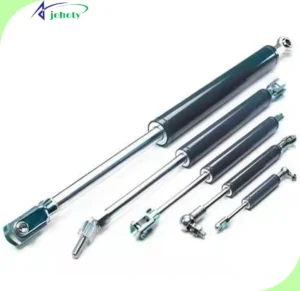
Use Cases about how to measure gas struts
Background
A manufacturing company specializing in producing high-end furniture was facing a challenge! the gas struts used in a type of their popular office chairs had inconsistent performance. This led to an increase in product quality issues and customer complaints. The company decided to re-evaluate the gas spring selection and measurement process. The target was to improve product quality and customer satisfaction.
Challenges
- Gas struts came in a variety of sizes and required precise measurements. This was to ensure an exact match to design parameters.
- Potentially encountered inconsistent readings of force and stroke length during the measurement process.
- Older measuring tools failed to provide the required accuracy, leading to errors in production.
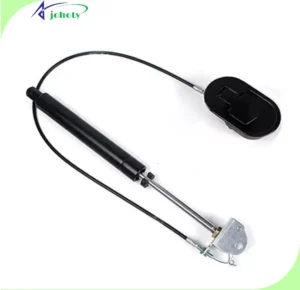
Solutions
- Upgrading measurement tools: The company invested in high-precision electronic force gauges and digital calipers. It was to improve the accuracy and repeatability of measurements.
- Measurement process standardization: Developed a detailed set of guidelines for the measurement process. Including pre-measurement preparation, specific measurement steps, and data logging methods. It was to measure each gas spring with the same standard.
- Employee training: Special training sessions were organized to teach employees how to use the new tools. Follow the new process, emphasizing the importance of accurate measurements.
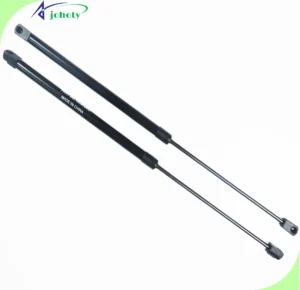
Results
Improved measurement accuracy: significantly improved consistency and accuracy of measurements through the use of high-precision tools and standardized processes.
Reduced production errors: More accurate gas spring measurements resulted in more consistent product quality on the production line. It reduced rework and scrap rates.
Increased customer satisfaction: Improved performance and reliability of the final product. It resulted in fewer customer complaints and higher repeat purchase rates.
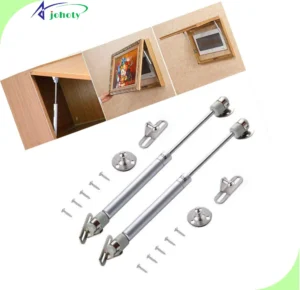
Best practices and recommendations on how to measure gas struts
With the best practices and recommendations below. You can substantially refine the measurement process for gas struts both in terms of accuracy and productivity. This guarantees that your products are designed and manufactured to meet superior quality benchmarks.
Best practices:
- Use the right tool: Ensure you use an accurate, calibrated measuring tool. Such as an electronic force gauge, precision calipers, or digital slide rule. This is critical to obtaining accurate measurements.
- Environmental control: Take measurements in a temperature-controlled environment to avoid temperature fluctuations affecting results. Ensure the work area is clean and dust-free to avoid any external interference during the measurement.
- Repeated Measurements: To ensure consistency and accuracy of measurement results, take multiple measurements of each parameter and calculate the average value.
- Detailed Records: Records of all measurement results and conditions. Including date, time, measurement tool model, and environmental conditions. This helps with future reference and quality control.
- Safety first: always observe safety guidelines during measurements. Employ suitable protective gear for individual safety and ensure the right safety measures. Especially when handling gas struts with high forces or large dimensions.
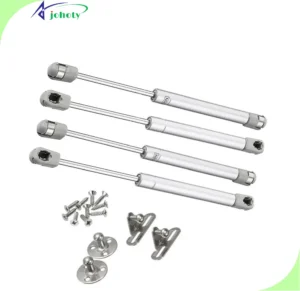
Recommendations:
- Measurement tool recommendations: Choose reputable brands and suppliers such as Mitutoyo, Fluke, etc. Who provide tools that typically excel in accuracy and reliability.
- Maintenance and calibration: For all measurement tools, regular maintenance and calibration are required to keep them performing at their best. Using a professional service to ensure calibration accuracy.
- Ongoing training: To know the best practices and latest measurement techniques, it’s better to regularly train operators. This enhances not just the precision of measurements but also boosts overall efficiency.
- Technical support: Choose a tool and equipment supplier that offers good technical support and customer service. When encountering measurement problems or asking for technical advice, professional help can be obtained quickly.
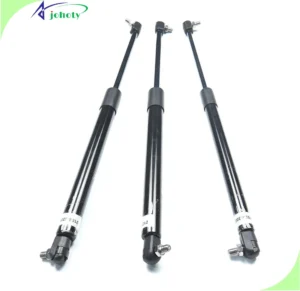
FAQ
Why is the force (F) measurement of gas struts important?
Force is one of the most critical parameters of a gas spring. it directly affects its effectiveness in actual applications. Accurate force measurement ensures that the gas struts satisfy the requirements of the special use case. It can avoid performance problems caused by overloading or underloading.
How can I avoid errors during measurement?
To minimize errors, use accurately calibrated measurement tools. Control the measurement environment, e.g. temperature and humidity, and determine the average value by repeated measurements. Ensure that the gas struts and tools are stabilized during the measurement process. This can avoid any external disturbances that may cause variations in the readings.
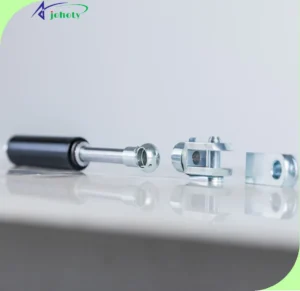
What are the tips for measuring the stroke (S) of gas struts?
When measuring stroke, make sure the gas struts move smoothly from fully contracted to fully extended. This avoids rapid stretching or releasing, which can lead to inaccurate measurements. Use an accurate measuring tool and repeat the procedure at the same measurement point to get a consistent reading.
What are the common challenges in measuring dimensions (D) of gas struts?
When measuring the diameter and length of a gas strut. Make sure the measuring tool is parallel and in close contact with the surface of the gas strut. It is to prevent measurement errors. For gas struts with complex shapes or small-sized parts. Use the appropriate measuring accessories and techniques to obtain accurate data.
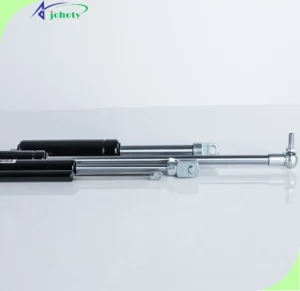
What steps should one take when there’s an obvious discrepancy between the design criteria and the measured results?
First, verify the calibration and application of the measuring tools again to confirm the measurement process’s precision. If confirming the measurement is correct, assess whether to adjust the design parameters or whether you need to communicate with your gas spring supplier. This is to find the right product that meets the design requirements.
Where can I find professional gas strut measurement services?
As a gas strut manufacturer and supplier, Johoty Technology can offer specialized measurement services and technical support. In addition, third-party inspection organizations and professional engineering service companies can also provide such services. Especially for complex applications or where high precision is required.
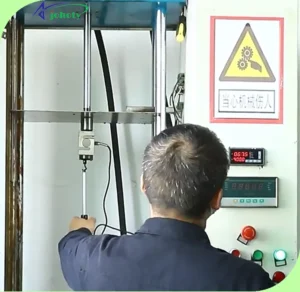
Conclusion: Accurate measurement, driven to success
The ability to accurately measure gas struts is key to optimizing product design and increasing productivity. It secures your product’s alignment with superior quality criteria, acting as a key foundation. With the guide in this article, we hope to provide engineers, technologists, and purchasing decision-makers with comprehensive strategies and tips. Accurately measure gas struts to increase your project success.
We explore everything from preparation to measurement practices to solutions to common problems. Each of these steps is an important part of ensuring that your measurements are both accurate and reliable. By adopting the right tools, following best practices, and considering the expert advice we offer. By taking this approach, you can sidestep typical errors and attain measurements that are both precise and efficient.


